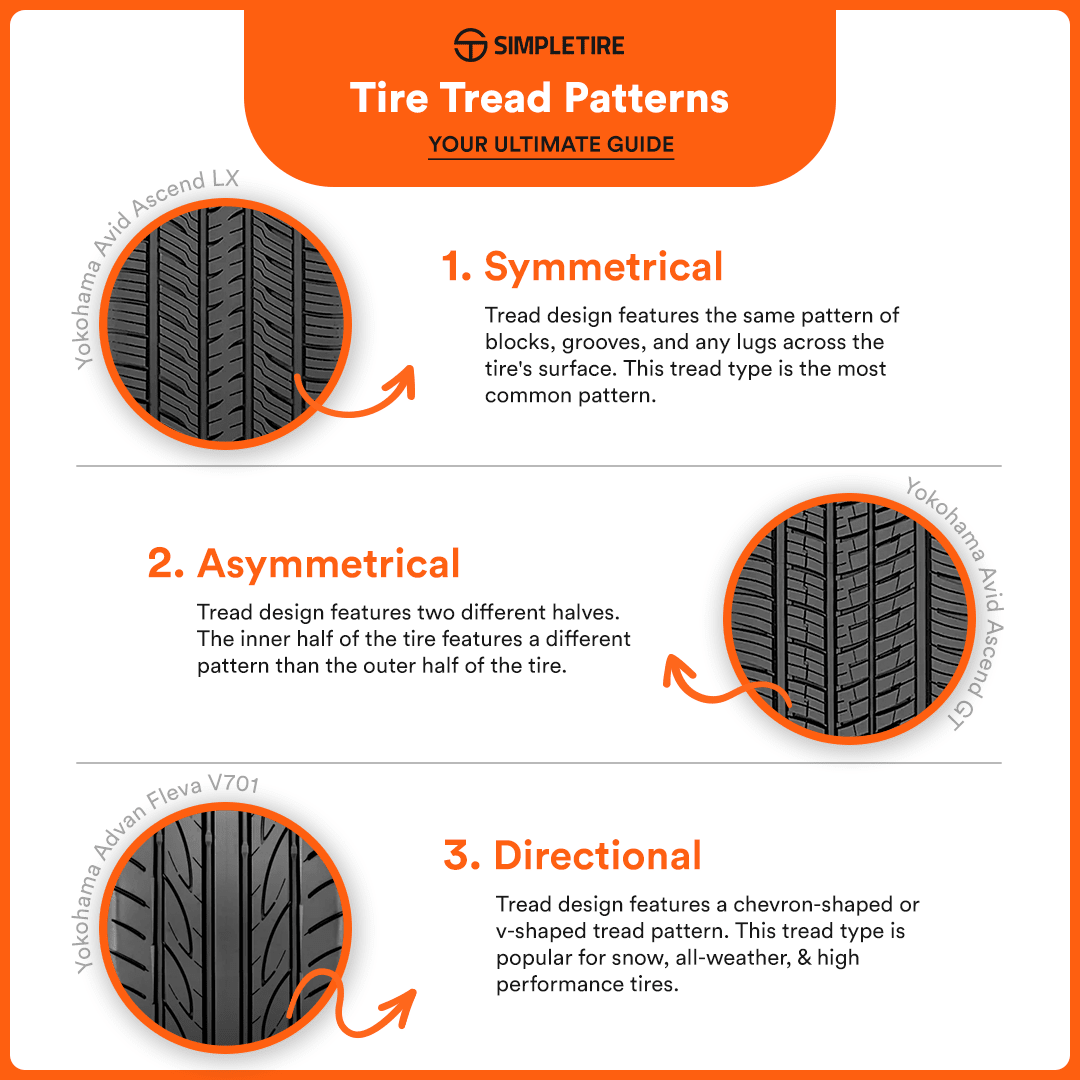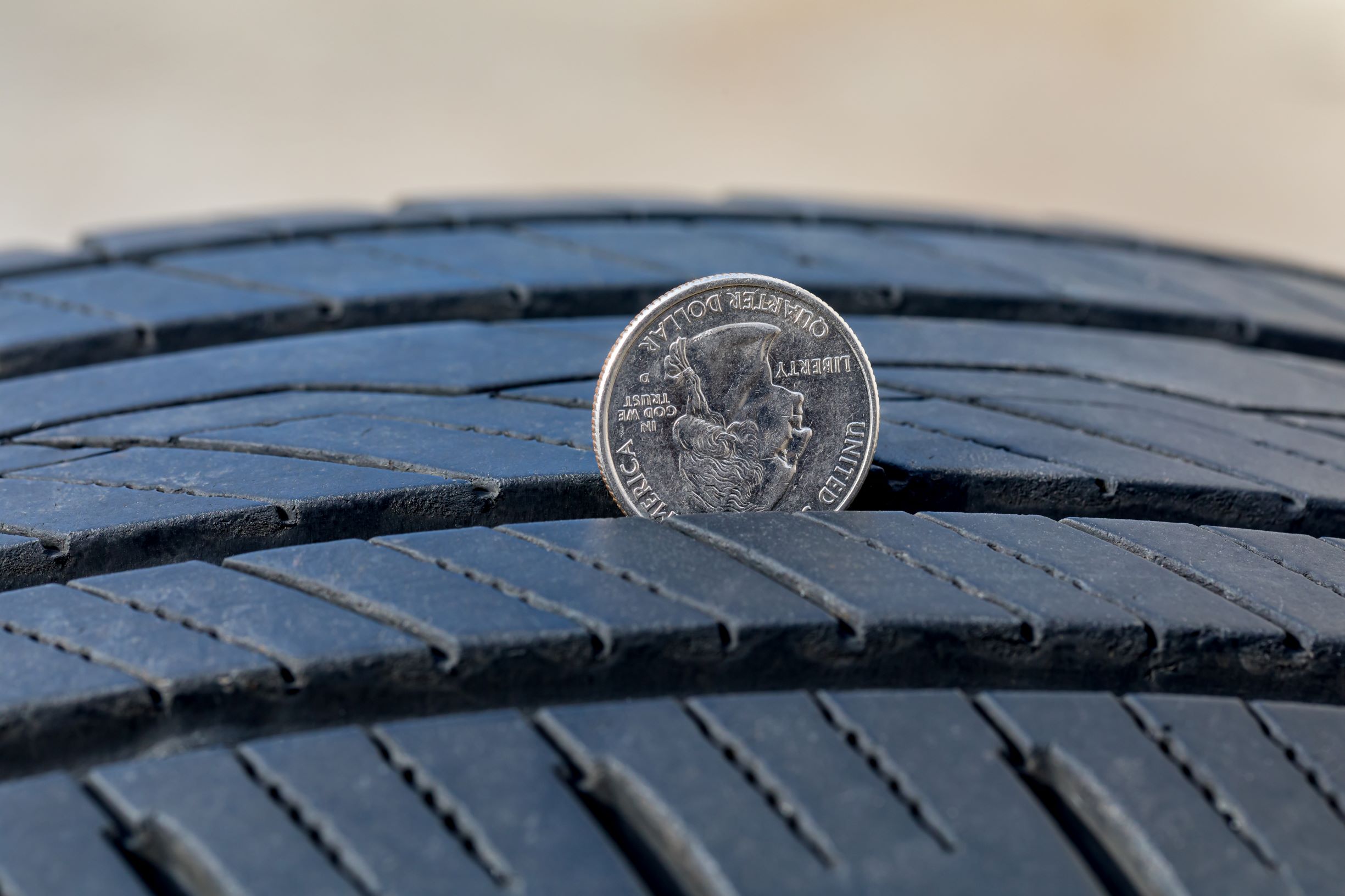Tire maintenance & safety
Understanding Tire Traction: Key Factors

Free shipping
Best price guarantee
Special pricing
Financing with Resolve
Easy returns
Tire maintenance & safety

Tires are the only point of contact between your vehicle and the road, making them a critical component for ensuring a safe and comfortable ride. The ability of your tires to grip the road, known as traction, is essential for maintaining control of your vehicle in various driving conditions.
Understanding the science behind tire traction can help you make informed decisions when selecting tires and maintaining them for optimal performance. Several factors, such as tire pressure, tread design, and road conditions, play a significant role in determining the level of traction your tires provide.
In this article, we'll dive into the world of tire traction, exploring the key concepts and elements that contribute to your vehicle's grip on the road. By the end, you'll have a better understanding of how to choose and care for your tires to ensure the best possible traction and safety.
Traction is the resistance between the tire and the ground in reaction to the torque being exerted by the wheel axle under engine power. In simpler terms, it is the force that keeps your vehicle from sliding while accelerating, braking, or cornering. Tires can generate traction because of the friction between the rubber compound and the road surface.
Several key factors influence the amount of grip your tires can provide:
Tire Pressure: Maintaining the correct tire pressure is crucial for ensuring optimal traction. The right tire pressure allows the tire to distribute the vehicle's weight evenly across its tread pattern, maximizing the tire's contact area with the road. Underinflation can cause the tire's sidewalls to flex more, resulting in a larger but less effective contact patch, while overinflation can reduce the size of the contact patch as the tire becomes too hard.
Tread Design: Tire tread patterns are carefully engineered to provide the best possible grip in various conditions. The design of the tread determines the tire's ability to latch onto the road, affecting acceleration, braking, and cornering capabilities. Tread patterns are also designed to channel water away in wet conditions, reducing the risk of hydroplaning.
Tire Compound: The mixture of rubber and other materials used in a tire, known as the tire compound, is formulated for specific performance characteristics. Different compounds offer varying levels of grip, wear resistance, and temperature sensitivity. High-performance tires often use softer compounds that provide excellent traction but may wear more quickly.
Road Surface: The type of road surface your tires encounter plays a significant role in determining the amount of grip they can deliver. Dry asphalt provides the most traction, while wet pavement, snow, and off-road trails each present unique challenges for tire grip. The micro-texture and macro-texture of the road surface also influence traction, with rougher surfaces generally providing better grip.
By understanding these factors and how they work together, you can make informed choices when selecting tires for your vehicle and driving conditions. Proper tire maintenance, including regularly checking tire pressure and tread depth, can also help ensure your tires continue to provide optimal traction throughout their life—an important consideration for your safety on the road.
The amount of air in your tires directly influences their ability to grip the road. Maintaining proper inflation helps create an effective contact area, where the rubber meets the surface, essential for traction and stability. This ensures that the vehicle's weight is evenly spread across the tires, optimizing handling and performance.
When tires are underinflated, the contact area can become uneven and excessively large, as the sidewalls compress more than intended. This increases rolling resistance and can lead to uneven wear patterns, diminished fuel economy, and potential safety issues. Conversely, overinflated tires result in a reduced contact area, making the tire overly firm. This condition lessens the tire's grip, especially on slippery surfaces, and can make the ride feel more rigid.
Adhering to the manufacturer's recommended tire pressure is vital for achieving optimal grip. These guidelines consider the vehicle's specifications, including its weight and design intent, to provide a balance between performance and safety. However, these figures should be tailored to your driving context for the best results.
Several elements influence the ideal pressure settings, such as the type of vehicle, specific tire design, and prevailing driving conditions. Heavier vehicles might need increased pressures to properly support their mass, while certain tire designs might have unique requirements based on their construction and purpose. Additionally, factors like ambient temperature and road conditions can affect how tire pressure settings perform.
Regularly checking and adjusting tire pressure ensures that your tires function at their best. This practice is particularly important when preparing for long journeys or when experiencing changes in weather conditions. By maintaining the right pressure, you enhance safety, and performance, and extend the lifespan of your tires, ensuring a reliable and comfortable driving experience.

Tread patterns are integral to how a tire manages different driving environments, affecting both its efficiency and noise levels. Symmetrical tread patterns, common in all-season tires, offer an equilibrium of performance and comfort by minimizing road noise and facilitating even treadwear. This pattern suits drivers looking for a dependable and long-lasting option across a range of conditions.
Asymmetrical tread patterns, on the other hand, are crafted for versatility, particularly in performance tires. These designs incorporate diverse patterns across the tire's surface, optimizing different segments for enhanced grip in both dry and wet environments. The outer tread often features larger blocks for superior cornering, while the inner portion is tailored for wet traction, ensuring these tires meet various driving requirements effectively.
Directional tread patterns, showcasing a unique arrow-like design, excel at managing wet conditions. These patterns direct water away from the tire quickly, reducing the chance of hydroplaning and maintaining control on slick roads. This design is particularly beneficial for drivers who often face rainy weather, as it enhances safety by maintaining road contact.
A tire's grip is significantly influenced by its tread design, which affects how the tire engages with the road surface. Performance tires, with distinct and prominent tread patterns, are designed to maximize the contact area, thereby improving stability and handling, particularly at higher speeds. This ensures that drivers experience reliable traction during acceleration, braking, and cornering maneuvers.
These robust tread designs ensure tires adapt closely to varying road surfaces, offering drivers enhanced control and confidence. Opting for a tire with an appropriate tread pattern allows drivers to optimize their vehicle's handling characteristics for specific driving styles, whether for everyday use or more demanding performance driving.
Efficient water channeling plays a critical role in tread patterns, especially during adverse weather. Tread grooves function as pathways for water to be expelled, maintaining effective contact between the tire and the road surface. This design minimizes the risk of hydroplaning by ensuring the tire remains firmly planted.
Directional tread designs, in particular, are adept at swiftly dispersing water due to their streamlined groove configuration. Such patterns are crucial for maintaining traction and stability during rain-soaked drives, providing consistent performance and safety across various wet conditions.
The depth of tire tread is essential for maintaining effective traction, particularly when navigating wet, icy, or uneven terrains. Adequate tread depth allows tires to efficiently displace water, maintaining a secure grip on slick surfaces. This capacity is crucial in adverse weather conditions, where loss of traction can significantly elevate the risk of skidding or hydroplaning.
As tires wear down, the grooves become less capable of managing water and debris, which can lead to extended stopping distances and diminished control. Monitoring tread depth is vital for ensuring that tires offer the best performance and safety. Regular checks help determine when it's necessary to replace tires before they reach a critically worn state.

Assessing tire tread depth can be accomplished with a few straightforward methods. A tire tread depth gauge provides precise measurements, allowing for an assessment of the main grooves at multiple points around the tire to identify uneven wear.
For a quick check without specialized tools, the quarter test is an easy method. Place a quarter into the tread grooves with Washington's head facing down—if the tread doesn’t reach the top of Washington’s head, it indicates that the tread depth is less than optimal, suggesting that tire replacement should be considered.
Additionally, tires include built-in treadwear indicators, and small raised sections found within the grooves. These indicators serve as a visual cue that the tread has worn down to a level that necessitates replacing the tire, ensuring continued safety and performance on the road.
Selecting tires that match your driving environment is key to maintaining reliable traction and safety. For those who frequently encounter varying weather, all-season tires are a practical choice. They deliver dependable performance across diverse conditions, such as dry roads and mild snow, thanks to their versatile design.
In regions where temperatures soar, summer tires excel by providing superior grip on hot, dry surfaces. Crafted with specialized compounds, they maintain flexibility and contact with the road under intense heat. However, for colder climates where snow and ice are common, winter tires are indispensable. Their unique tread patterns and softer rubber ensure they remain supple, offering enhanced grip in freezing conditions.
Off-road enthusiasts should consider all-terrain tires, which are engineered to tackle both paved roads and rugged paths. Their aggressive tread designs offer exceptional traction on loose terrains, such as gravel or mud, making them ideal for adventurous drivers who navigate challenging landscapes.
To ensure your tires maintain their grip, diligent maintenance is essential. Begin by routinely examining your tires for signs of wear or embedded debris that could affect performance. This proactive approach helps identify issues before they compromise safety.
Checking tire pressure monthly is crucial—proper inflation not only optimizes road contact but also extends tire lifespan. Regular rotations, typically every 5,000 to 8,000 miles, promote uniform wear, ensuring all tires perform effectively over time.
When wear indicators signal that tread depth is insufficient, prompt tire replacement is necessary to maintain safety. These practices, when consistently followed, ensure your tires operate at peak performance, providing reliable traction in all driving conditions.
By understanding the science behind tire traction and the factors that influence it, you can make informed decisions when selecting and maintaining your vehicle's tires. Proper tire care not only ensures optimal performance and safety but also helps extend the life of your tires, saving you money in the long run. When it's time to replace your tires, we invite you to shop for tires online and discover the best deals, making the process of finding the right tires for your vehicle simple and convenient.
Search By